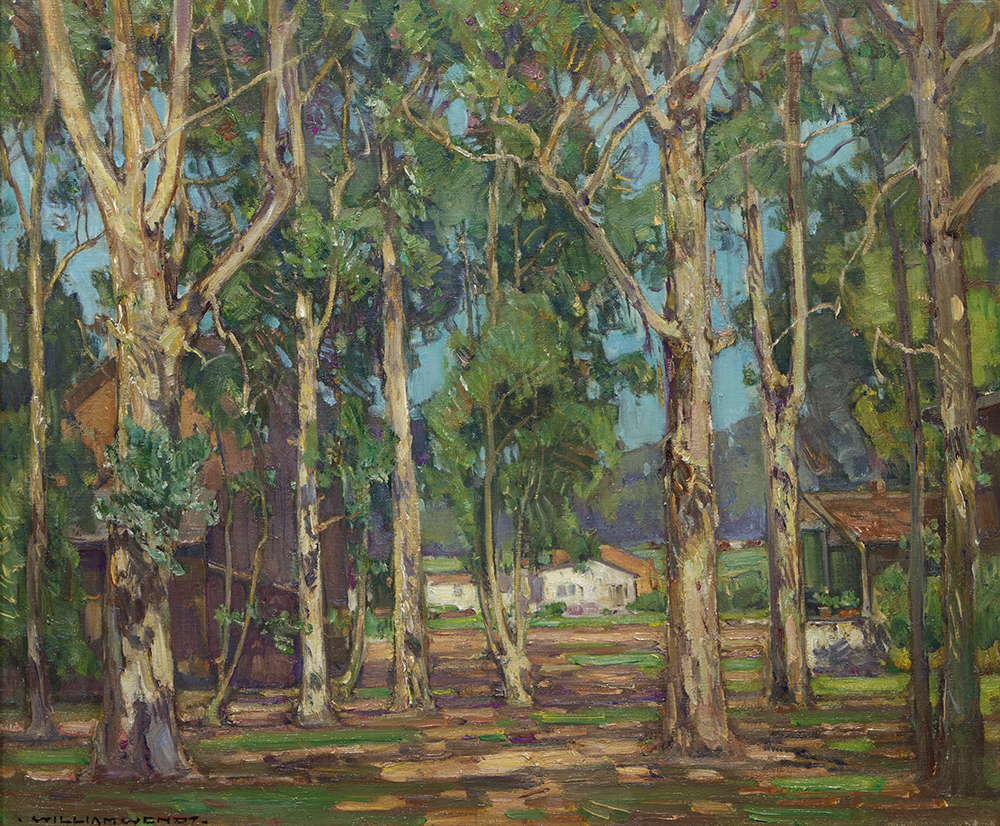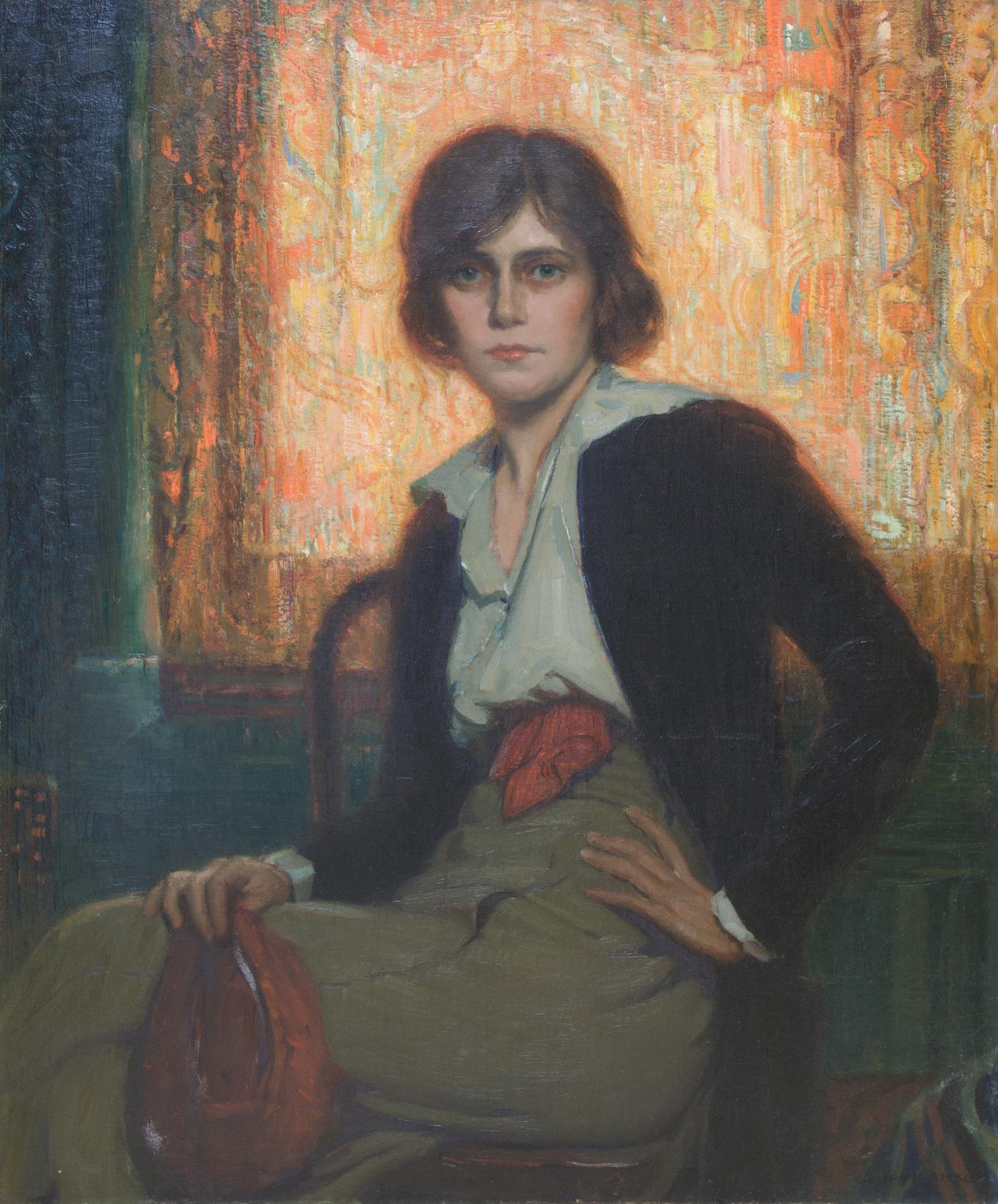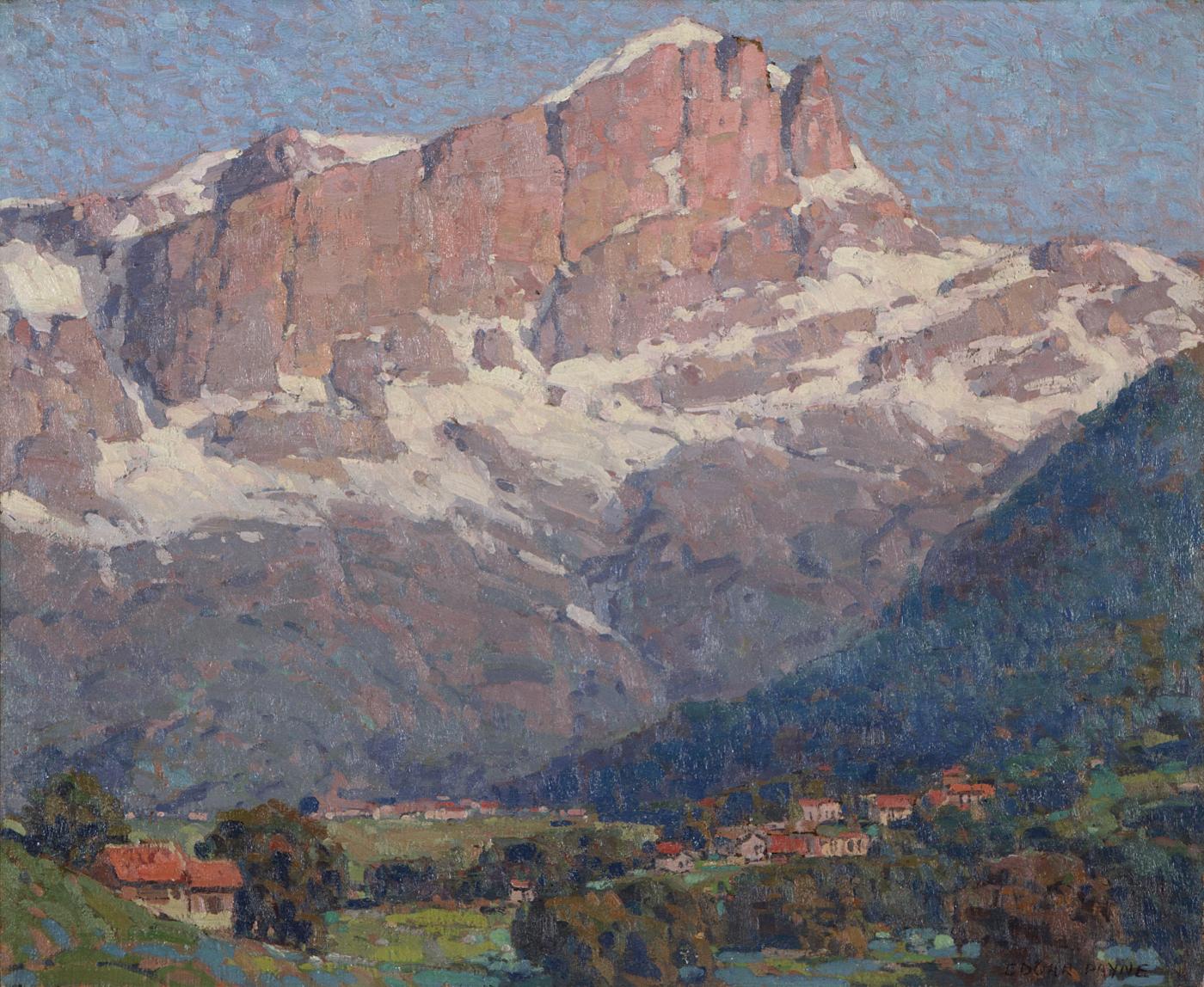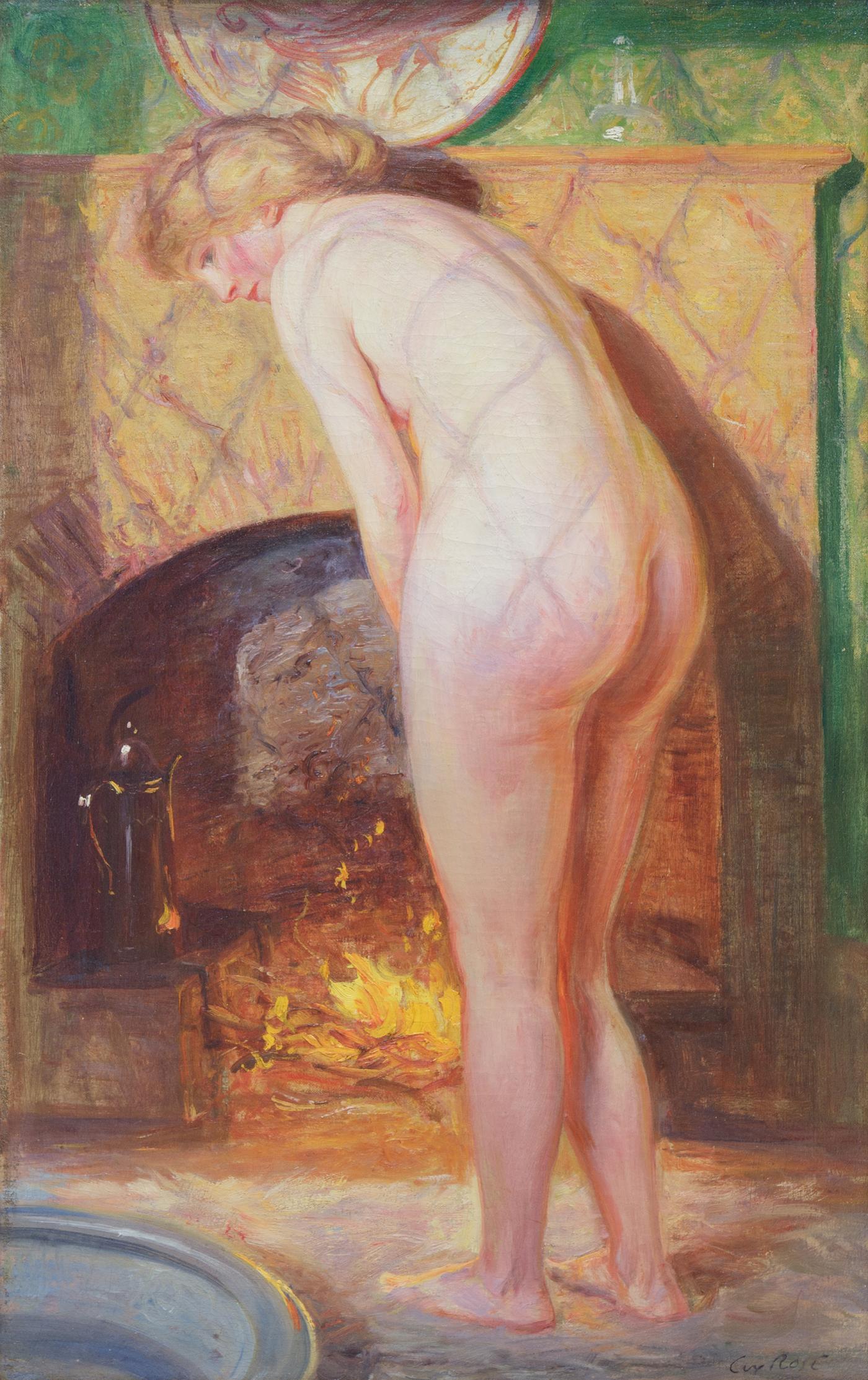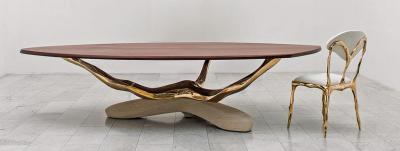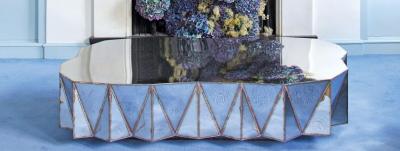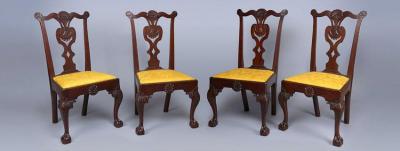Discussing California Impressionism with Heather James Fine Art
The Expert Series
Masters of California Impressionism, the exhibition currently on view at Heather James Fine Art in Palm Desert, California, presents works from a decidedly unique subset of American Impressionism. What makes California Impressionism so incomparable? “The sun,” says James Carona with a laugh. Carona, who owns Heather James Fine Art with his wife, Heather Sacre, continues, “It’s a much brighter, happier, more optimistic style of Impressionism.”
Starting in the early-twentieth century, artists such as William Wendt, E. Charlton Fortune, Guy Rose, Karl Albert Buehr, Joseph Kleitsch, Edgar Payne, and Maurice Braun, many of whom had worked in Europe and on the East Coast, flocked to California, lured by the state’s fresh air, open spaces, and awe-inspiring scenery. Unlike the East Coast Impressionists, who were often forced to paint from inside their homes and studios because of the harsher weather, the California Impressionists painted en plein air, capturing the light and color of regions such as Laguna Beach, Carmel/Monterey, and Palm Springs. “Geography plays a vital role in Impressionist painting,” says Carona, and the California Impressionists were fortunate enough to have a wide range of stunning subjects to paint. From the sun-dappled coast to the desert, mountains, canyons, and forest, the diversity and vitality of the land imbued their works with an unparalleled energy. “There is really nothing else like it,” says Carona. “They changed Impressionism forever.”
While California Impressionism flourished through much of the 1930s, the movement soon gave way to modernism, and the contemporary scene began to eclipse more traditional styles. Interest in California Impressionism wasn’t renewed until the mid-1970s when Nancy Moure published her seminal tome Dictionary of Art and Artists in Southern California Before 1930. According to Carona, “Art happens and then history catches up...for the first time, people had access to all of these artists in one place. There was no one source before that and it really helped curators and people put their arms around this period and then the trajectory just followed. As the works became known, catalogued, exhibited, and the story was being told, the interest followed. Collectors caught up with the story and I think that the main reason is because the works are really quality works -- they’re simply incredible paintings. They also offer collectors the opportunity to patronize their own heritage. To be able to buy Impressionism from your own space is a very special thing. These are major, major painters and yes, they’re collected outside of California, but for California collectors, to buy California Impressionism is a great opportunity. You’re truly buying your own history.”
Today, the pioneering spirit of the California Impressionists lives on. “I think that the key thing about California in general, is that it’s a place where artists come to break the rules,” says Carona. “The California Impressionists did that and that spirit of experimentation -- painting en plein air, and painting big open spaces instead of tighter landscapes -- changed a lot of people’s perspectives.” He adds, “California has very few indigenous movement, but something like the Light and Space movement captures the impact of California Impressionism. It’s another movement that couldn’t have happened in any other place -- number one, it’s the geography and number two, California offered the freedom to go off the canvas.”
Masters of California Impressionism features a variety of landscapes and figurative works, including an entire wall of paintings by William Wendt -- one of the most celebrated California landscapists and one of the first homesteaders to buy a lot on Laguna Beach. Known for his masculine style, Wendt’s paintings feature bold colors and richly textured landscapes. “They’re very different than, say, Guy Rose,” says Carona. “Rose feminized the style and [adopted] a softer palette and brushstrokes.” The works on view in Masters of California Impressionism exemplify the range of styles within California Impressionism. “It’s not just masculine and feminine,” says Carona. “But dark and light, figurative and non-figurative.”
Masters of California Impressionism, which is on view at Heather James Fine Art through May 30, 2015, is complemented by a number of exhibitions, including Japanese Fukusas, which presents a selection of rare Japanese textiles; Betty, Gold, Taira, and Ed Dean, featuring contemporary sculptures and mixed-media works; and Carla, Hilda, and David Morris, which includes Abstract Expressionist paintings and contemporary sculpture. Established in the late 1990s as an Asian and African antiquities gallery, Carona and Sacre eventually expanded their offerings. “Once we embraced the idea of putting our interest out there to begin with, it gave us the comfort that we could do a gallery that could present Impressionist, modern, and contemporary art,” says Carona. “We wanted to showcase really special objects with history, provenance, and aesthetic value. We wanted to be able to share our gallery with the community and to become a place where people not only come to shop, but come to have an experience and examine these rare objects and ask questions about them and just marvel at the craftsmanship and the artistry that went into making them. It’s very meaningful to us -- to be able to share the history and the meaning of each piece is extremely special. When people connect with a piece it triggers something in them -- a curiosity, I guess -- and we like to be part of that.”















